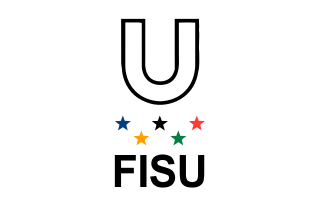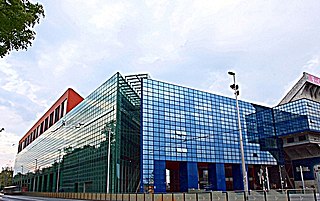
Croatia, officially the Republic of Croatia ), is a country located at the crossroads of Central and Southeast Europe. Its coast lies entirely on the Adriatic Sea. It borders Slovenia to the northwest, Hungary to the northeast, Serbia to the east, Bosnia and Herzegovina and Montenegro to the southeast, and shares a maritime border with Italy to the west and southwest. Its capital and largest city, Zagreb, forms one of the country's primary subdivisions, with twenty counties. The country spans 56,594 square kilometres, and has a population of nearly 3.9 million.

The geography of Croatia is defined by its location—it is described as a part of Central Europe and Southeast Europe, a part of the Balkans and Southern Europe. Croatia's territory covers 56,594 km2 (21,851 sq mi), making it the 127th largest country in the world. Bordered by Slovenia in the northwest, Hungary in the northeast, Bosnia and Herzegovina and Serbia in the east, Montenegro in the southeast and the Adriatic Sea in the south, it lies mostly between latitudes 42° and 47° N and longitudes 13° and 20° E. Croatia's territorial waters encompass 18,981 square kilometres (7,329 sq mi) in a 12 nautical miles wide zone, and its internal waters located within the baseline cover an additional 12,498 square kilometres (4,826 sq mi).

Zagreb is the capital and largest city of Croatia. It is in the north of the country, along the Sava river, at the southern slopes of the Medvednica mountain. Zagreb stands near the international border between Croatia and Slovenia at an elevation of approximately 122 m (400 ft) above sea level. The population of the Zagreb urban agglomeration is 1,271,150, between a quarter and a third of the total population of Croatia, while at the 2021 census, the city itself had a population of 878,131.

Franjo Tuđman, also written as Franjo Tudjman, was a Croatian politician and historian. Following the country's independence from Yugoslavia, he became the first president of Croatia and served as president from 1990 until his death in 1999. He was the ninth and last President of the Presidency of SR Croatia from May to July 1990.

Velika Gorica is the largest and most populous city in Zagreb County, Croatia. According to the 2011 census the city itself has a population of 31,341, while the municipality has a population of 63,517 inhabitants.

Dražen Petrović was a Yugoslav and Croatian professional basketball player. A shooting guard, he initially achieved success playing professional basketball in Europe in the 1980s with Cibona and Real Madrid, before joining the National Basketball Association (NBA) in 1989.

Hrvatska radiotelevizija, or Croatian Radiotelevision, is Croatia's public broadcasting company. It operates several radio and television channels, over a domestic transmitter network as well as satellite. HRT is divided into three joint companies – Croatian Radio, Croatian Television and Music Production, which includes three orchestras and a choir.

Robert Prosinečki is a Croatian professional football manager and former player who played as a midfielder.

Miroslav "Ćiro" Blažević was a Bosnian-Croatian professional football manager and player.

The FISU World University Games, formerly the Universiade, is an international multi-sport event, organized for university athletes by the International University Sports Federation (FISU). The former name is a portmanteau of the words "University" and "Olympiad".

Maksimir Stadium is a multi-use stadium in Zagreb, Croatia. Named after the surrounding neighbourhood of Maksimir, it is one of the largest stadiums in the country with a current seating capacity of 25,912 and a maximum possible capacity of 35,423. It is the home stadium of Croatian club Dinamo Zagreb and has been used since 1990 by the Croatia national football team for the majority of international competitions.

Stadion u Kranjčevićevoj ulici, also known as Stadion Concordije between 1921 and 1945, is a multi-purpose stadium located in Trešnjevka neighbourhood, in the Croatian capital of Zagreb. It is mainly used for football matches and was historically the home ground of NK Zagreb until their eviction from the ground in 2018. More recently the stadium has been the home ground for Croatian First League side NK Lokomotiva. In addition, NK Rudeš use the stadium for selected matches, particularly Croatian First League games. First opened in 1921, it has undergone many renovations and facelifts, with its current layout dating back to the 1987 Summer Universiade renovation. The Croatia national football team played only once at the stadium in a 3–0 friendly game win against South Korea on 13 March 1996. With its reduced capacity from 2008, the stadium can hold 8,850 people, which makes it the second biggest stadium in Zagreb, behind Stadion Maksimir. In 2018, the stadium was refurbished with chairs installed in the eastern grandstand and a new hybrid lawn installed, leaving it with a seating capacity of 5,350 seats.

Ban Jelačić Square is the central square of the city of Zagreb, Croatia, named after Ban Josip Jelačić. The official name is Trg bana Jelačića. The square is colloquially called Jelačić plac.

The history of Zagreb, the capital and largest city of Croatia, dates back to the Middle Ages. The Romans had built a settlement, Andautonia, in present-day Ščitarjevo. The name "Zagreb" was first used in 1094 at the founding of the Zagreb diocese in Kaptol, after the Slavs had arrived in the area. Zagreb became a free royal city in 1242. It was made the capital of Croatia in 1845 and elected its first mayor, Janko Kamauf, in 1851. According to the 2011 Croatian census, Zagreb had 792,875 inhabitants and was also Croatia's largest city by area.

Alvaro Načinović is a former Croatian handball player who competed for Yugoslavia and Croatia respectively.

Zagreb Glavni kolodvor is the main railway station in Zagreb, Croatia. Located 1 km (0.62 mi) south of the city's main square, it is the largest station in Croatia and the main hub of the Croatian Railways network.

Football in Yugoslavia had different levels of historical development depending on the geographical regions. Following the extreme popularity of the sport in Central Europe, it soon became the most popular sport in the territories of Yugoslavia as well.

Zagi M-91 is a submachine gun created in 1991, when the dissolution of Yugoslavia left Croatia with few or no weapons to arm their military in the time of Croatian War of Independence. Since the embargo prevented the newly formed state from legally buying equipment abroad, they had no choice but to design new weapons locally. This gun was produced by LIKAWELD, now bankrupt machine tools factory based in Zagreb, also called the "First Croatian Weapons Factory", PHTO.

Građanski nogometni klub Dinamo Zagreb, commonly referred to as GNK Dinamo Zagreb or simply Dinamo Zagreb, is a Croatian professional football club based in Zagreb. Dinamo play their home matches at Stadion Maksimir. They are the most successful club in Croatian football, having won twenty-four Prva HNL titles, sixteen Croatian Cups, еight Croatian Super Cups, and one Inter-Cities Fairs Cup. The club has spent its entire existence in top flight, having been members of the Yugoslav First League from 1946 to 1991, and then the Prva HNL since its foundation in 1993.
The 2016 European University Games, also known as 2016 European Universiade, was the third biannual European Universities Games (EUG), the largest European multisport event, with 4800 participants from 403 universities in 41 countries. The event took place in the Croatian cities of Zagreb and Rijeka between 13 and 25 July 2016, and was organised by European University Sports Association (EUSA) and Croatian Academic Sport Federation (CASF) with the cooperation of University of Zagreb, University of Rijeka, City of Rijeka, City of Zagreb and Ministry of Science, Education and Sports (Croatia).





















